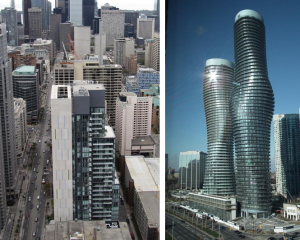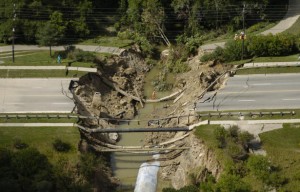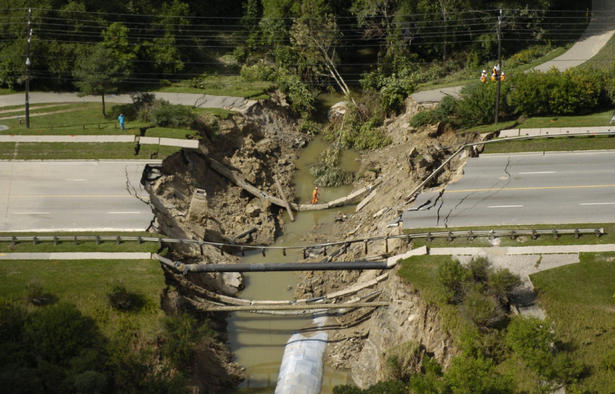I live in Toronto, a city on one of the Great Lakes of Canada, Lake Ontario. Is climate change going to be an issue for my home, a mid-latitude city with over 5 million, far from any seacoast, far from Tornado Alley in the United States, and in today’s climate, a place with reliable levels of precipitation in the form of rain and snow? Toronto doesn’t get prolonged droughts. The lake is our water source and also serves to cool the many downtown towers that crowd the landscape. So don’t we really have it good up here in the Great White North? Not so much!

CCAP stands for the Climate Change Adaptation Project. Established at the University of Waterloo, to the west of Toronto, the project focuses on how cities need to adapt to climate change and forecasts the costs associated with changing the infrastructure to overcome vulnerabilities. In the studies done by the Project the overwhelming consensus is that it is better and cheaper to build city infrastructure rather than attempt to restore roads, sewers and other city services after a disruptive weather event. Most vulnerable are the power grid and storm water drainage systems. In 2005, a sudden thunderstorm wreaked havoc across the northern part of Toronto in a matter of minutes, submerging parking lots, flooding basements and washing out a major city street. The street I live on was one that experienced flooding in many homes. Total cost to the City – $47 million to repair washed out infrastructure. Cost to the insurance industry for damaged homes – $600 million. At the time the storm was described as a once-in-a-hundred year event, but climate models are suggesting that not to be the case. As a result Toronto has begun a program to harden the infrastructure and expand capacity to deal with extreme weather events.

And none too soon because in 2011-12 Toronto had its mildest winter on record with almost no snow and very few days of temperatures below freezing. This was followed by a summer that has been one of the hottest on record if not the hottest ever. That is why Toronto is looking at how to address future climate change. This is our future forecast for the decade between 2040 and 2050:
- Average increases in annual temperatures by 4.4 Celsius (7.9 Fahrenheit) with increases in winter of 5.7 Celsius (10.2 Fahrenheit) and 3.8 Celsius (6.8 Fahrenheit) in the summer.
- A six-fold increase in the number of days when temperatures will not drop below 24 Celsius (75 Fahrenheit).
- A decrease in snowfall with 26 fewer snow days each year.
- An increase in winter rainfall and winter storms, with summer storm frequency remaining the same but storm intensity more than doubling.
- Heat waves with temperatures above 32 Celsius (90 Fahrenheit) lasting three or more days increasing by a factor of ten.
Urban areas suffer from the heat island effect. That alone makes them significantly warmer than surrounding countryside. But as temperatures continue to rise expect these heat islands to be even more exaggerated. The warming temperatures may decimate urban forest canopies, a counter to the urban heat island, with native trees no longer capable of surviving the rising temperatures. Air conditioning demand will increase putting further strain on power utilities, and pumping more heat into the urban environment. Add growing population and more automobiles and trucks on urban roads, and you have a recipe for environmental degradation.

Toronto isn’t alone in North America in making such predictions. Many other American and Canadian cities are looking at climate models that paint a similar picture. Urban centres west of the Mississippi in the American heartland also face the increased threat of prolonged droughts, a declining aquifer and competition from agricultural lands putting further stress on scare freshwater resources. Cities right across the Canadian prairie have to contend with similar challenges.
So what are cities to do to mitigate against the forecasted predictions in 2050? With more than half the world today, city dwellers, we need to deploy a new model for urban sustainability.
Strategies for Cities to Adapt to Climate Change
- Urban centres on coastlines will be the ones most drastically impacted by rising temperatures. That’s because rising temperatures correlate with rising sea levels. Storm surges such as experienced recently with Hurricane Sandy, and in 2006 with Hurricane Katrina, represent enormous challenges. Existing infrastructure has proven to be incapable of handling storms of increasing intensity. In many cases cities will have to consider purchasing the property of those living in high risk coastal zones and moving them further inland to higher ground. Restoring wetlands can mitigate storm surges. So can flood gates and seawalls. But ultimately coastal cities will have to make the hard choices about where citizens can and cannot live as a consequence of climate change.
- Countering rising temperatures requires many solutions. Urban centres need to create significant forest canopies to cut down on the absorptive capacity of asphalt and concrete surfaces on the ground, and barren composite roofs on buildings and residences. As temperatures rise existing species of trees may not tolerate the heat so cities will need to experiment with new species capable of tolerating the changing climate. More green space in the form of parks and gardens will help. That includes putting gardens on city roofs. Not only should there be these green roofs, but also cities will need to encourage building managers to install blue roofs, roofs that capture rainfall and use the water for cooling and sanitation for those in the building.
- As recently demonstrated with Hurricane Sandy, reliance on a centralized power grid is no longer ideal. Cities like Sydney, Australia, are already experimenting with a non-grid centric method of generating power with individual buildings combining solar, wind, battery, geothermal, waste-to-energy and other means of managing local energy requirements. With multiple energy generating sources and implementation of a smart grid for identifying and distributing power where its needed, cities will be able to maintain a level of electrical service even in catastrophic circumstances like a hurricane.
- Cities need to plan infrastructure capable of withstanding once-in-a-century storms happening once or more within a decade. That means digging up and replacing existing subsurface infrastructure to build enhanced storm water capacity, and temporary containment ponds for excess overflow. That means improvements to water treatment plants so that they don’t overflow and contaminate drinking water supplies when one of these storms strikes. That means establishing substantial budgets focused on public works infrastructure.
I am sure that you, my readers, can add to this conversation. What are your cities planning to do about the consequences of climate change?















